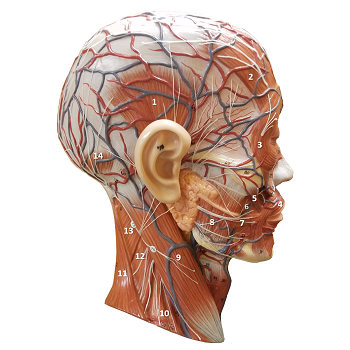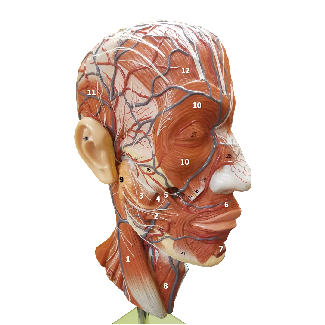Muscles of Facial Expression
« Back to Muscular System mainMuscles of facial expression are very important to social animals such as humans because they provide a means for the non-verbval communication of emotions such as happiness (smile), surprise (elevated eyebrows), sadness (pout), anger or consternation (furrowed brow), and so on. The ability of these muscles to produce such a wide assortment of expressions is provided by the unique way they insert into the skin of the face instead of into bones as do most other skeletal muscles.
Because of their inclusion on the models, we have additionally provided identifacation of axial muscles that position the neck, head, mandible, and larynx.
Sponsorship opportunities

Check back soon...

